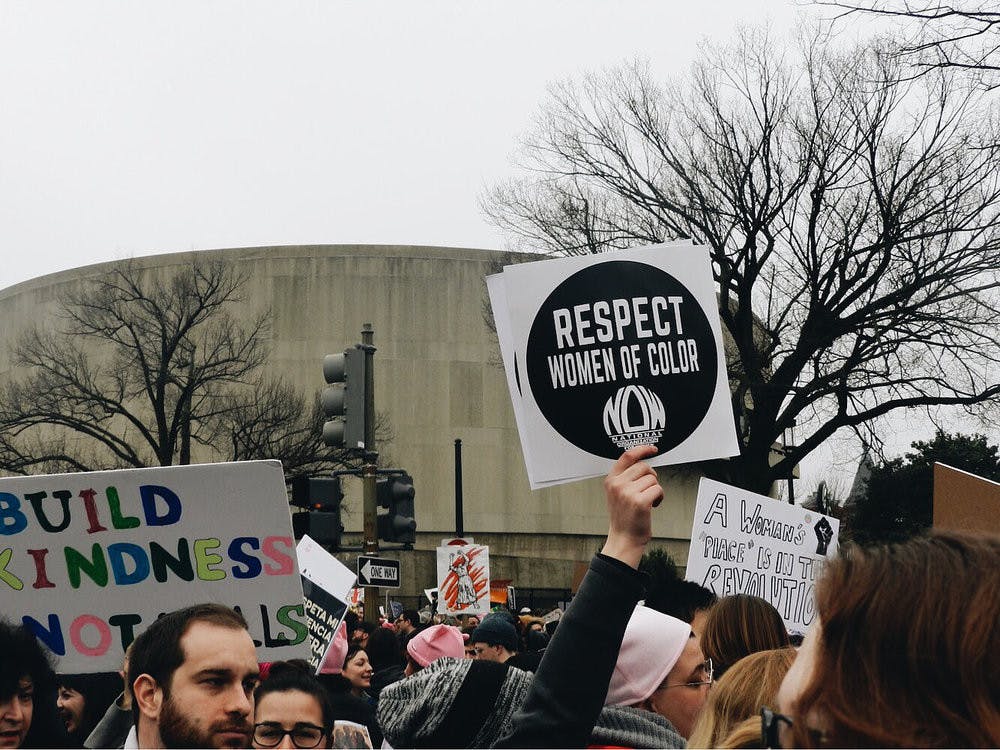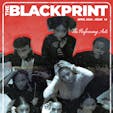BY: ELISHA BROWN

Over half a million women gathered in Washington, D.C. on Saturday to attend the Women's March a day after President Donald Trump's inauguration. The demonstration was just one of the many sister marches that swept the nation on the same day.
"I'm here to show Trump and the rest of the patriarchy that women's rights are human rights, and we will continue to fight for our freedoms," said Boma Brown-West, who works at a nonprofit.
Instead of a single goal, the march organizers presented a list of "unity principles" that included a range of issues that affect women, from access to reproductive healthcare to workers' rights. The signs that demonstrators brought to the march reflected the organizers' previous statements that the march was not specifically an anti-Trump protest. Women and men carried signs that read, "Si se puede!," a rallying cry birthed by the United Farm Workers in the 1970s and later picked up by immigration rights activists. Others were scrawled with the phrase "Black Lives Matter," a mantra that doubles as the name for a movement against police brutality, among other issues affecting black folks.

Eva Mayanja, Howard University sophomore
Local college students showed up to the march in masse. "I'm here today because the person that's in office shouldn't be in office. He's trying to establish rights that are going to put me in danger, not only as a woman, but as a woman of color," said Howard University sophomore Eva Mayanja.
The Women's March faced criticism for originally being called the Million Woman March, which was borrowed from a 1997 grassroots demonstration of black women in Philadelphia. The organizers responded to calls of lacking diversity by centering leadership like Palestinian-American activist Linda Sarsour and inviting high profile speakers like Angela Davis and America Ferrera.
Mayanja, who is black, was aware of the controversy surrounding the name switch from "Million Woman March" to "Women's March," but showed up anyway, noting that the committee "stated what they did wrong and fixed it."

Most of the crowd did not get a chance to hear the rally speeches, but they did not mind, as evidenced by the constant "Fired up! Ready to go" chants, a few rogue "Leave my pussy alone" yells, and the call to "Let us march" as the famous icons, singers, actresses and activists wrapped up on stage.
Protesters were instead concerned with actually marching, which began about an hour after the original 1:15 p.m. start time and did not follow the route to the White House as planned. Still, it was hard not to get wrapped up in the spirit of the gathering, especially as the crowd, full of women, men and children, marched up Independence Ave. and past Trump International Hotel.
"This will get the message out there," said Shavon, a black woman who found out about the march through Facebook and withheld from sharing her last name with The Blackprint.

Boma Brown-West
While it's impossible to accurately estimate the number of people on the National Mall during demonstrations, some have guessed around 500,000 people marched throughout downtown D.C. on Saturday. Meanwhile, the president took to social media to show his disdain for the marchers, tweeting "Why didn't these people vote?"
Besides criticism from Trump, some questioned whether or not the march would translate into tangible action and organizing, as well as more solidarity for other causes. Will more white women show up to Black Lives Matter marches? What's next? Or was the march just a nice gesture?
Back at American University, student groups are working to flesh out these questions. The Black Student Alliance, which was one of the many clubs that organized last fall's Solidarity with Our Sisters protest after the harassment of black freshmen women, is holding "After the March Ends," a conversation that explores many of the qualms with the Women's March, on Monday, January 30 at 7 p.m. in Mary Graydon Center.
All photos taken by Taryn Daniels.


